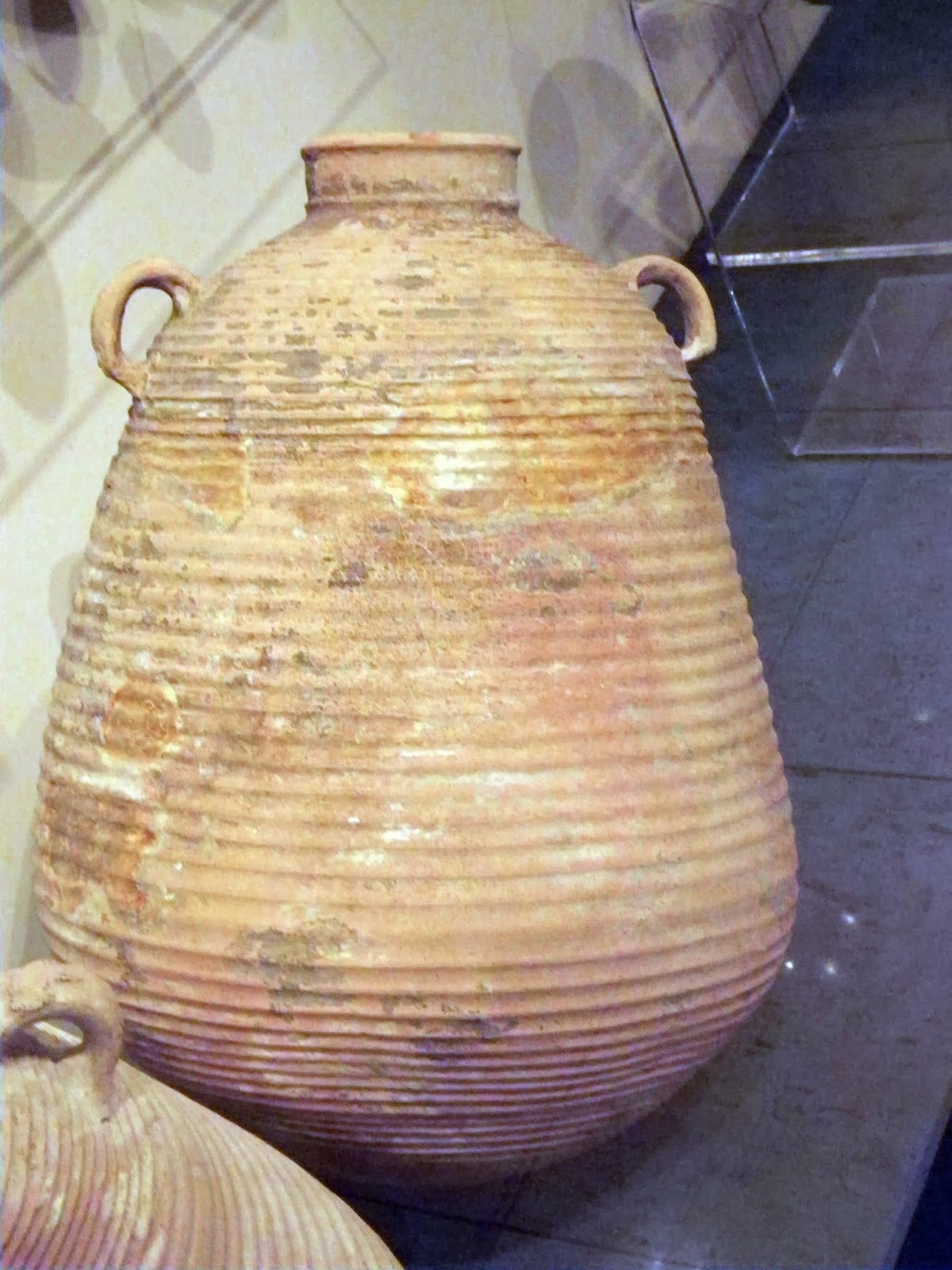A large commercial "bag-shaped" Roman storage jar common in Palestine and Dead Sea area.
Jodi Magness states:
"This type [bag-shaped storage jars] dates to the second half of the first century and first half of the second century and is well represented at sites around the Dead Sea and in the Bar Kokhba caves." Jodi Magness, “The Pottery from the 1995 Excavations in Camp F Masada.” Bulletin of the American Schools of Oriental Research 353 (2009): 79.We were able to find enough pieces to complete part of the shoulder and rim. We were unable to make the handle fit and we did have another complete rim of a similar jar. It might belong to the the other jar.
Magness goes on to describe our style of jar:
"A different type of locally produced, bag-shaped storage jar dating to the first century and first half of the second century is represented by a small number of specimens (figs. 4:2-3; 8:6). These jars are made of hard-fired, orange or orange-brown ware, some times with a light brown or light orange slip. They have an everted neck with a thickened, ledge-like rim and a ridge at the base of the neck. These are often referred to as "bell-shaped jars," identified as Type SJ5 at Ein Boqeq (where it is the second most common storage jar type), Group 13 at Machaerus (see Fischer and Tal 2000: 36-37; Loffreda 1996: 47), and Type M-SJ13 at Masada (Bar-Nathan 2006: 62-65)." Jodi Magness, “The Pottery from the 1995 Excavations in Camp F Masada.” Bulletin of the American Schools of Oriental Research 353 (2009): 79.
 During a visit to the New Archaeological museum in Amman I spotted this vessel (right) which is a similar style.
During a visit to the New Archaeological museum in Amman I spotted this vessel (right) which is a similar style.However, the label over the two jars at the Amman Museum stated they are Byzantine period (5th-6th century AD) jars. The Jordanian Museum may have mislabeled these jars as Byzantine when in fact they are from the Roman period although the form may have carried over into the Byzantine period.



No comments:
Post a Comment